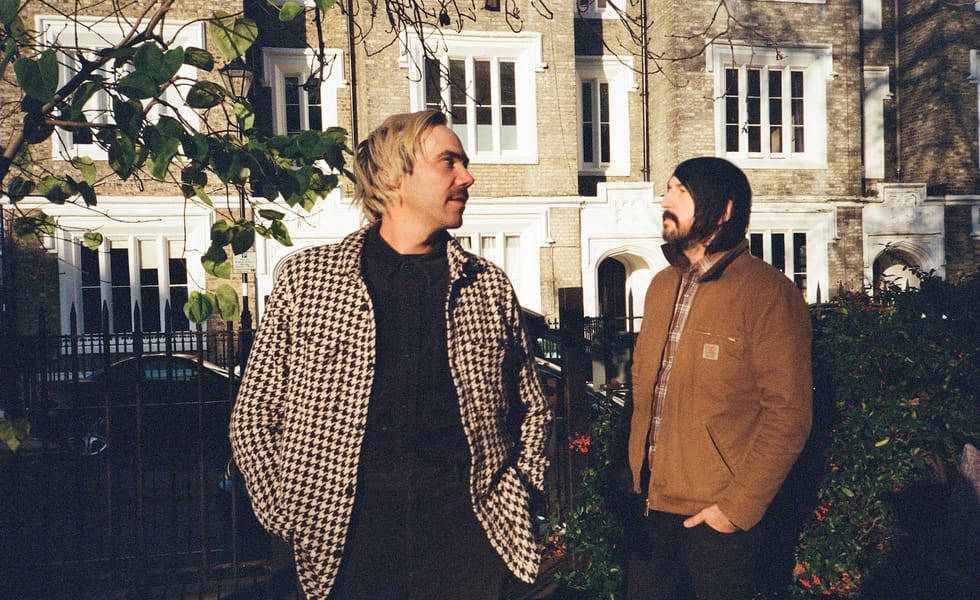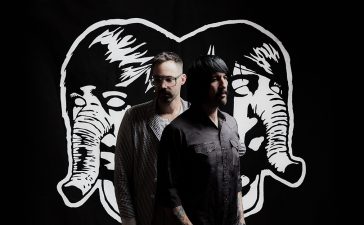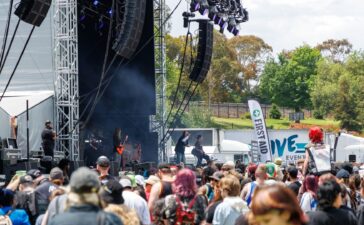Drummer and vocalist Sebastien Grainger talks the twentieth anniversary of You’re A Woman, I’m A Machine, their 2006 break up and his complex relationship with success
I genuinely didn’t expect Sebastien Grainger to be quite so candid. Musician and celebrities often hide behind their carefully crafted facade when it comes to uncomfortable subjects. Grainger is different. He wears his heart on his sleeve and seems to revel in diving into the depths of whatever’s on his mind. It’s refreshing, and in his voice, I can hear a mix of thoughtfulness and raw honesty as he talks freely about his past, his band, and the intricacies of success.
Calling from his home studio in Southwestern Ontario, Grainger’s bundled up in a thick orange beanie. The room feels warm, a contrast to the cold Canadian winter outside. “It’s schizophrenic weather,” he says with a laugh, his voice cutting through the comfort of familiarity.
It’s not long before Grainger and his bandmate, Jesse F. Keeler will return to Australia, a place they haven’t played in fourteen years. The last time Death from Above were down under, it was for Parklife, a festival that feels like another lifetime. “It was weird, when I first came to Australia, I was like ‘this place is so similar to Canada.’ I wasn’t very well-travelled then, but I liked it.”
This upcoming tour, however, isn’t just a typical return. It marks the twentieth anniversary of You’re A Woman, I’m A Machine, the album that helped launch the band into the rock stratosphere. When I announce the number, I can see the weight of the number land on Grainger’s face. Like he still hasn’t fully come to terms with it. “It’s wild,” he says after a long breath. “I’m trying to wrap my head around it… It’s surprising that it’s been that long. A lot has happened since then…”
His voice carries a note of melancholy as he reflects on the years that have passed. “But a lot hasn’t changed either. We’re still playing the same stuff. If you listen to the Arctic Monkeys, their first record to their last are so different. We didn’t do that. There’s still this vitality to the band, an energy in the shows that’s the same. It’s a show now, not just a gig. And yeah, we’re not as skinny anymore—we can afford steak now,” he jokes, the smile in his voice is evident.
What Grainger acknowledges, however, is that You’re A Woman, I’m A Machine wasn’t a product of overnight success. The band had put in years of hard work, a relentless schedule of gigs and EPs that helped build an expectation for what Death from Above’s sound would be. By the time their debut album came around, they had already earned their place in the scene.
Since releasing the album, Grainger and Keeler have lived full lives. Both becoming fathers, releasing solo records, and eventually moving to different places. Their paths diverged for a time, with the band even breaking up in 2005—a moment that Grainger looks back on with a mix of frustration and clarity. “We were very sure of ourselves when we made that record. There were unspoken rules about riffs, beats, what you could or couldn’t say. If one of us did something the other didn’t like, we’d just look at each other, and we’d know. In retrospect, it felt fucking easy.”
Yet, as success flooded in, Grainger found himself overwhelmed by something else entirely. “I started to not enjoy it,” he admits. “I felt undeserving. If the hotel was too nice, I’d get angry. I didn’t enjoy it. I was a middle-class guy, didn’t expect to make any money. Never ate a fancy meal. So there was a lot of imposter syndrome.”
It was these complex emotions, this constant battle within himself, that began to erode the foundation of Death from Above. “To make a rock and roll band work, you have to believe you’re the best band in the world. Everything was competitive. We had this supreme confidence. But that’s what it takes.”
And then came the break-up, in 2005. “I just wanted to destroy it. I stopped thinking we were good. I didn’t like hanging out with Jesse. I didn’t like what it was becoming. I didn’t like not being an individual. I didn’t like being perceived as one thing.”
In the wake of the split, Grainger and Keeler each pursued side projects. But the magic they had together was hard to replicate. “I didn’t realise how special what we did was. The differences between us, they created a spark. I thought they were a handicap.”
Five years later, the penny dropped for Grainger. The band needed to reunite. “I hadn’t thought about it in years. Then an old manager sent me an email, asking if I’d do a Death from Above show. That was the first time I thought about it.”
At a crossroads in his own life, Grainger reached out to Keeler. “I called Jesse. I just said, ‘Hey, I know we haven’t talked in a while. But if we’re going to do it, let’s do it now.’ And that was the beginning. Realising it was unique and precious.”
Keeler took some time to come around. It wasn’t easy. “If it was just the two of us, we could have moved on,” Grainger reflects. “But outside influence, people asking ‘Why are you getting back together?’ made things complicated.”
It wasn’t an easy path, but eventually, the band came back together. “There were growing pains,” Grainger admits. “We argued but got it all out of the way. Then it was cool.”
Since their 2011 reunion, Death from Above continue to defy the odds. Releasing three albums, they have showed the world that sometimes, even the most fractured relationships can be healed with time. If anything, their return is proof that it’s not about the right or wrong time to come back. It’s all just about admitting your mistakes, moving on then making great art.
Death From Above 1979 are performing in Brisbane, Adelaide, Melbourne and Sydney from April 22. They will be supported by DZ Deathrays. Tickets can be purchased here.







